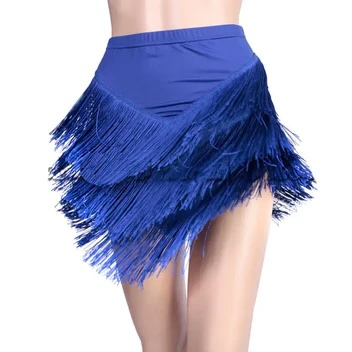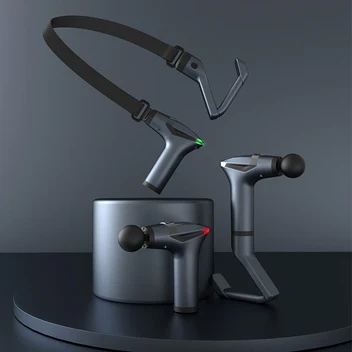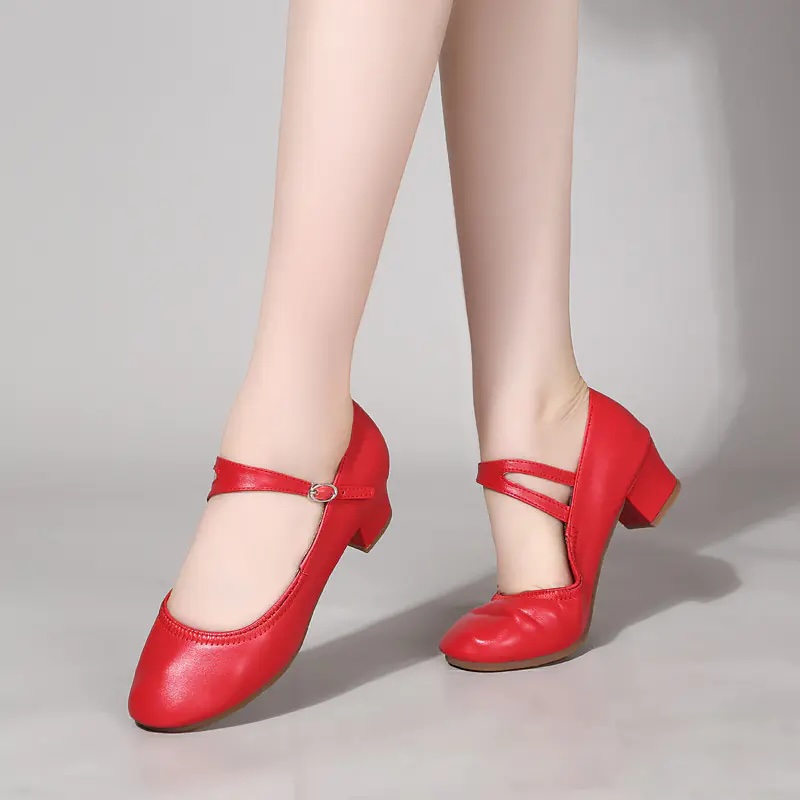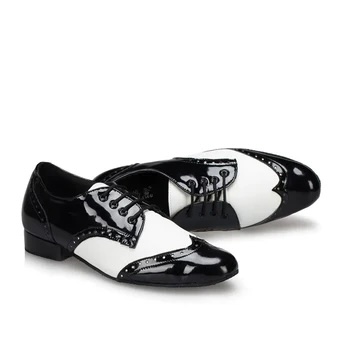Unleash Your Dance Spirit!
Discover premium dance gear, exclusive merchandise, and everything you need to dance your absolute best. Join thousands of passionate dancers worldwide!





Raut Nacha Dance In Chhattisgarh India: Origin, History, Costumes, Style, Technique, And Music
Many people love learning about different cultures, especially the colorful and vibrant traditions of India. One such fascinating tradition is the Raut Nacha dance from Chhattisgarh, a folk dance that tells stories from history through its movements and music.
Did you know this dance is deeply rooted in mythological tales featuring Lord Krishna and his victories? This blog will take you through the origins, styles, costumes, techniques, and music that make Raut Nacha a unique cultural heritage of Chhattisgarh.
Raut Nacha is not just any folk dance; it's a portrayal of devotion, emotion, and energy which brings communities together during festivals like Diwali and Gaur festival. From its historical significance to the dazzling attire worn by performers, we'll cover every aspect that highlights why this traditional dance is an important part of both Chhattisgarh culture and Indian dance forms at large.
Get ready to be fascinated!
Origin and History of Raut Nacha
Raut Nacha has deep roots in Chhattisgarh's culture. The dance celebrates the legendary victory of Lord Krishna and showcases the influence of the Yadavas, his descendants.
Legend of Lord Krishna's victory
The legend of Lord Krishna's victory is a cornerstone of Raut Nacha. It tells the tale of Krishna defeating the evil king Kansa. This battle signifies good triumphing over evil, a theme celebrated in many Indian folk dances.
The Yadavas, descendants of Krishna, play a significant role in this dance form. They embody the spirit and valor represented by their legendary ancestor.
During festivities like Gaur, dancers reenact stories from this epic saga. Their movements reflect Krishna's grace and strength. As they perform, they honor their heritage and connect past victories with current celebrations.
Dance is the hidden language of the soul.
Influence of Yadavas, descendants of Krishna
The Yadavas, descendants of Lord Krishna, play a vital role in the Raut Nacha dance. This community celebrates their rich heritage through this folk dance in Chhattisgarh. They cherish the legend of Krishna's victory over evil forces.
Their cultural traditions and values strongly influence the movements and techniques of Raut Nacha.
This vibrant dance reflects elements from the Raas-Lila performances. Men and women gracefully perform as they depict scenes from mythology. The participation of both genders highlights unity within the Yadava community.
Vibrant costumes enhance their expressions and storytelling during the performance. Now, let’s explore the style and technique of Raut Nacha further.
Significance of the Gaur festival
The Gaur festival holds great importance for the Yadavas in Chhattisgarh. It celebrates Lord Krishna's victory over evil forces. This festival showcases community spirit and unity among the dancers.
People from various villages come together to perform Raut Nacha during this time. They express their joy through traditional folk dance and music.
Gaur also signifies the arrival of harvest season, marking a time of thanksgiving. The festival fosters cultural pride within local communities as they honor their traditions and history.
Such celebrations reflect Chhattisgarh's vibrant culture, blending mythology with dance forms like Raas-Lila. Next, we will explore the style and technique of Raut Nacha in detail.
Style and Technique of Raut Nacha
Raut Nacha showcases the beauty of traditional dance through its graceful movements and dynamic poses. Both men and women participate, bringing energy to the performance while drawing inspiration from the Raas-Lila dance.
Imitation of the Raas-Lila dance
Raut Nacha closely imitates the Raas-Lila dance. This dance draws inspiration from the playful and divine interactions of Lord Krishna with his followers. Dancers portray scenes filled with love and joy central to Hindu mythology.
They demonstrate elegant footwork and expressive hand gestures, capturing the essence of Raas-Lila.
Participants showcase both men and women in vibrant costumes. Together, they create a lively celebration through synchronized movements. Their choreography highlights the emotional depth found in mythological conflicts, connecting modern performers with ancient traditions.
Raut Nacha stands as a beautiful tribute to Indian folk dances like Raas-Lila while celebrating Chhattisgarh's rich cultural heritage.
Graceful movements and poses
The dance draws inspiration from the Raas-Lila, showcasing both grace and strength. Dancers execute fluid movements that capture the spirit of Krishna's playful antics. Each pose reflects deep emotions and stories rooted in tradition.
Participants seamlessly transition between dynamic steps and delicate gestures.
Men and women both take part in this vibrant folk dance. Their coordinated actions create a stunning visual display. The dancers embody joy, love, and devotion through their expressions.
Together, they breathe life into Raut Nacha with every step and turn.
Participation of both men and women
Raut Nacha features the vibrant participation of both men and women. This folk dance from Chhattisgarh showcases a rich blend of energy and harmony. Men often take the lead in dramatic roles, while women contribute with grace and elegance.
Together, they depict stories that celebrate culture and tradition.
The combination enhances the overall performance. Their synchronized movements reflect unity within the dance form. Costumes play a vital role in expressing their characters as well.
Each dancer adds to the colorful display through traditional attire, setting the stage for an exciting showcase of style and technique in Raut Nacha.
Colorful Costumes of Raut Nacha
The colorful costumes of Raut Nacha showcase the rich traditions of the Yadavas with vibrant colors and detailed patterns. Dancers wear intricate outfits that blend beauty and cultural significance.
These attire choices highlight the importance of embellishments and accessories in enhancing the overall performance. Explore more about these lively styles in our upcoming sections!
Traditional attire of the Yadavas
The traditional attire of the Yadavas features colorful and vibrant clothing that reflects their rich heritage. Men typically wear dhotis paired with bright turbans, while women dress in sarees adorned with intricate patterns.
These costumes showcase a blend of lively colors like red, yellow, and green. Accessories play a key role too; both men and women wear jewelry that adds charm to their outfits.
Costumes enhance the overall presentation of Raut Nacha dance. Each detail carries meaning and connects to their cultural roots. As dancers perform graceful movements, their attire moves with them, creating a visual feast for audiences.
This elaborate dressing perfectly complements the rhythms played during performances.
Vibrant colors and intricate patterns
Raut Nacha features vibrant colors and intricate patterns that captivate audiences. Dancers wear traditional attire inspired by the Yadavas, showcasing their rich heritage. Bright reds, greens, and yellows dominate the costumes.
Each color holds a special significance related to culture and festivals in Chhattisgarh.
Intricate patterns adorn the garments, reflecting artistic traditions. Embroidery and embellishments add depth to the costumes. Accessories such as jewelry enhance the overall look of each dancer.
These elements contribute to the captivating visual experience of Raut Nacha while celebrating folk dances of India like Raas-Lila and Panthi dance.
Importance of embellishments and accessories
Embellishments and accessories play a crucial role in the Raut Nacha dance. Dancers wear traditional attire that reflects their Yadava heritage. Bright colors, intricate patterns, and elaborate designs stand out during performances.
These elements enhance the visual appeal of the dance.
Accessories such as necklaces, earrings, and headpieces add to the overall look. They showcase craftsmanship and cultural significance. Each accessory carries meaning tied to local traditions.
Together, they create a vibrant experience that captivates audiences. Music accompanies each movement seamlessly, enriching the performance further.
Music in Raut Nacha
The music in Raut Nacha energizes the dancers and captivates the audience. Traditional instruments like drums and flutes create lively rhythms that enhance every movement.
Traditional instruments used
Raut Nacha features vibrant music created by traditional instruments. Musicians use the dholak, a hand drum known for its deep resonance. They play the flute to add a sweet melody that complements the dance.
Other instruments include nagara, which produces lively beats that energize performers and audiences alike.
These lively rhythms create excitement during performances. The combination of these instruments enhances the overall experience of Raut Nacha. This Chhattisgarh folk dance embodies cultural richness through both its movements and music.
Traditional sounds draw people into this colorful celebration of heritage and artistry.
Lively and energetic rhythms
Traditional instruments set the foundation for Raut Nacha's rhythm. Drums, flutes, and other folk instruments create a lively atmosphere. Musicians play energetic beats that inspire dancers.
The rhythms pulse with enthusiasm and joy. Dancers respond to these sounds with graceful movements.
As the music builds, performers express their stories through dance. The combination of upbeat melodies enhances each step and pose. This interaction between dance and music captivates audiences during festivals like Gaur.
In Chhattisgarh, people celebrate this vibrant art form together, united by its rhythmic charm.
Role of music in enhancing the dance performance
Music plays a vital role in Raut Nacha dance. It sets the mood and energizes the performers. Traditional instruments like dholak and harmonium create lively rhythms that enhance each movement.
The beats guide dancers as they imitate Raas-Lila, adding depth to their performance.
The energetic tunes invite spectators to join in the celebration. Music not only supports the dance but also enriches cultural expression. Each note contributes to the overall experience, making Raut Nacha an unforgettable tribal dance in Chhattisgarh, India.
Conclusion
Raut Nacha dance showcases rich traditions and cultural heritage. It connects deeply with the legend of Lord Krishna. The energetic movements reflect the Raas-Lila dance, engaging both men and women.
Vibrant costumes add charm to each performance, highlighting the Yadava culture. Traditional music fuels the excitement and enhances every step taken on stage. Experience this captivating dance form to appreciate its significance in Chhattisgarh’s artistic landscape.
FAQs
1. What is the origin and history of Raut Nacha Dance in Chhattisgarh, India?
Raut Nacha Dance originates from Chhattisgarh, India with a rich history that intertwines with Indian culture and traditions.
2. Can you describe the costume style for Raut Nacha Dance?
The dance costumes for Raut Nacha are unique and reflect the vibrant culture of Chhattisgarh; they play an integral part in the overall dance style.
3. How does the technique of Raut Nacha Dance differ from other dances like RaasLila or Theyyam?
While all three dances have their distinctive styles, techniques, and music, Raut Nacha's technique stands out due to its specific movements and rhythms native to Chhattisgarh.
4. How does Indian music influence the performance of Raut Nacha Dance?
Indian music greatly influences Raut Nacha Dance by setting its pace, rhythm and mood thus enhancing its overall performance.
Raut Nacha Dance In Chhattisgarh India Quiz
Test your knowledge about raut nacha dance in chhattisgarh india




 Sign in with Google
Sign in with Google